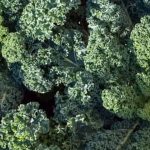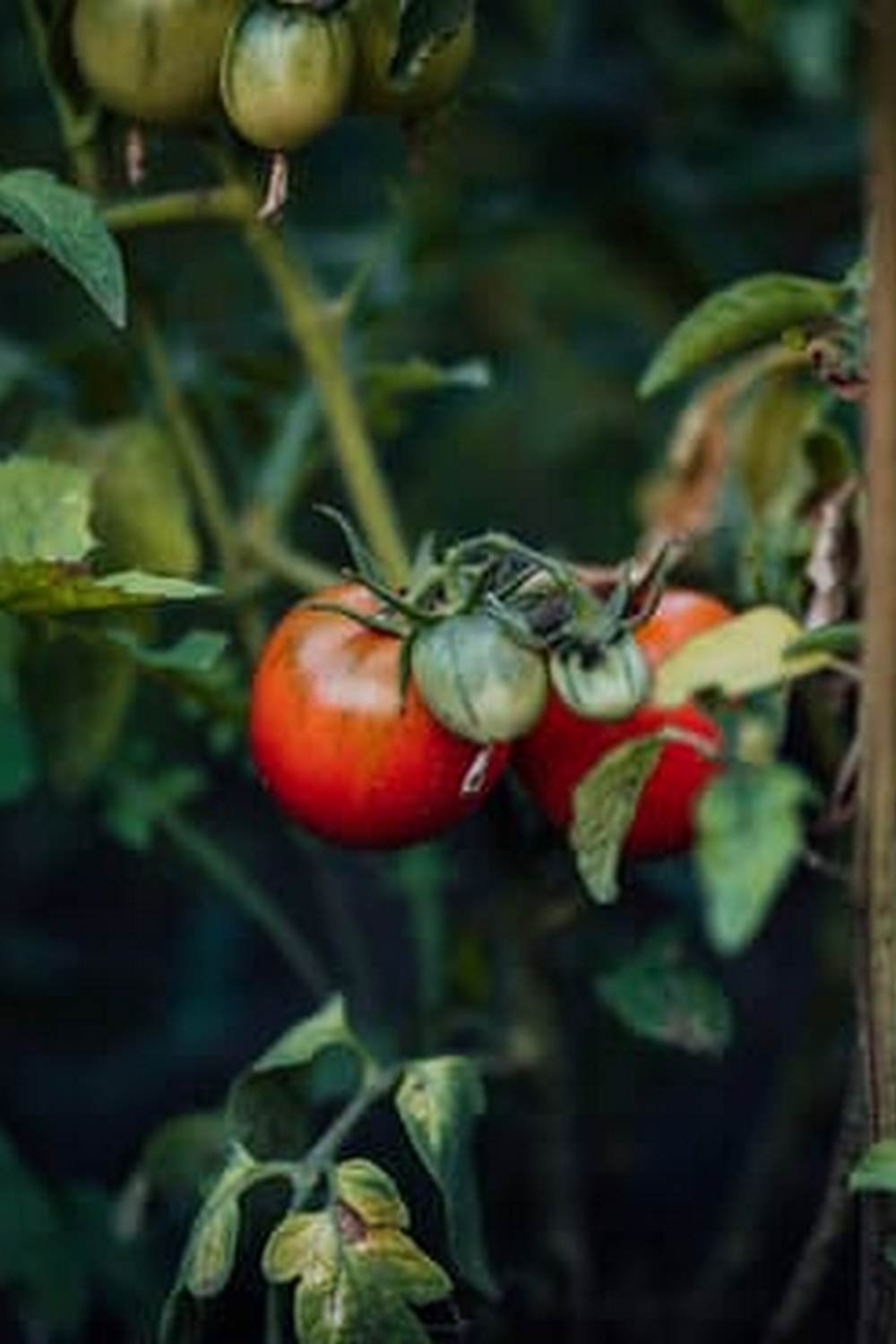When it comes to Northern California gardening, knowing the best vegetables to plant in the fall is essential for a successful harvest. From cool-season crops to varieties that thrive in the region’s mild autumn weather, understanding what to plant can make all the difference.
In Northern California, gardeners have a wide range of options for fall planting, from leafy greens to root vegetables and more. By choosing the right vegetables suited for the region’s climate and conditions, you can ensure a bountiful harvest.
Some of the key vegetables to consider planting in Northern California during the fall season include leafy greens like kale, lettuce, and spinach. These cool-season crops do well in the region’s moderate temperatures and can thrive through the fall months. Root vegetables such as carrots, beets, and radishes are also excellent choices for fall planting in Northern California. Their hearty nature makes them perfect for growing during this time of year.
In addition to leafy greens and root vegetables, other popular options for Northern California fall gardens include broccoli, cauliflower, Brussels sprouts, and peas. These vegetables benefit from the cooler temperatures of autumn and can produce abundant yields when planted at the right time. By selecting a variety of crops that are well-suited for fall growing conditions in Northern California, you can create a diverse and productive garden that will provide fresh produce throughout the season.
Ideal Growing Conditions for Fall Vegetables in Northern California
When it comes to growing vegetables in Northern California during the fall, it is essential to consider the ideal growing conditions for a successful harvest. The region’s unique climate and soil characteristics play a significant role in determining which vegetables thrive in the fall season. Here are some key factors to keep in mind for optimal growth:
- Sunlight: Most fall vegetables require at least 6-8 hours of sunlight per day to flourish. Ensure that your garden receives adequate sunlight by positioning your planting beds in a sunny location away from any obstructions.
- Soil Quality: Before planting, it is crucial to assess and improve the quality of your soil. Northern California’s soil can be sandy or clay-like, so amending it with organic matter like compost or aged manure can enhance its fertility and drainage.
- Temperature: Fall vegetables in Northern California thrive in daytime temperatures ranging from 60-80°F. Be mindful of frost dates in your area and choose cold-hardy varieties that can withstand cooler temperatures.
In addition to these growing conditions, proper watering techniques are vital for the health of your fall vegetable garden. Since Northern California experiences dry summers and potentially rainy winters, using drip irrigation systems or soaker hoses can help maintain consistent moisture levels without overwatering. Monitoring soil moisture regularly and adjusting watering schedules accordingly will promote healthy root development and prevent issues like rot or mildew.
Lastly, spacing between plants is an important consideration when planning your fall garden in Northern California. Adequate spacing allows for proper air circulation, reducing the risk of fungal diseases and promoting overall plant health. Follow seed packet instructions or consult local gardening resources for recommended spacing guidelines specific to each vegetable variety you plan to grow. By creating the ideal growing conditions for your fall vegetables, you can maximize their potential yield and enjoy a bountiful harvest throughout the season.
Preparing Your Garden for Fall Planting in Northern California
As the summer season transitions into fall, gardeners in Northern California have a unique opportunity to continue their gardening endeavors by planting a variety of vegetables that thrive in the cooler temperatures. By preparing your garden for fall planting, you can set yourself up for a bountiful harvest of fresh produce in the coming months. Here are some essential steps to take to ensure a successful fall gardening season in Northern California.
Clearing Out Summer Plants
Before you can start planting your fall vegetables, it’s important to clear out any remaining summer plants that may be past their prime. Remove any spent plants, weeds, and debris from your garden beds to make way for new growth. This will help prevent the spread of diseases and pests that may linger from the previous season.
Amending Soil and Adding Organic Matter
Fall is a great time to amend your soil and add organic matter to rejuvenate its nutrients after a long growing season. Consider adding compost, aged manure, or organic fertilizers to enrich the soil and improve its structure. This will provide essential nutrients for your fall vegetables to thrive and produce healthy yields.
Planning Your Fall Garden Layout
Before planting your fall vegetables, take some time to plan out your garden layout. Consider factors such as spacing requirements, sunlight exposure, and companion planting recommendations to maximize the potential of your garden space. By carefully planning out where each vegetable will be planted, you can create an organized and productive garden that is set up for success throughout the fall season.
Tools and Equipment Needed for Fall Gardening in Northern California
When preparing for fall gardening in Northern California, having the right tools and equipment can make all the difference in ensuring a successful harvest. One essential tool for fall gardening is a sturdy garden fork, which helps loosen soil and improve drainage for your vegetable plants. Additionally, a hand trowel is useful for planting seedlings and bulbs with precision, while a rake can help level the soil and remove debris from your garden beds.
Investing in a good pair of gardening gloves is crucial to protect your hands from thorns, dirt, and other hazards while working in the garden. Pruning shears are handy for trimming back spent plants and shaping bushes to optimize growth. For watering your fall vegetables, consider using a drip irrigation system or soaker hoses to deliver water directly to the roots where it’s needed most.
Another important piece of equipment for fall gardening in Northern California is a high-quality compost bin or heap. Composting organic matter such as kitchen scraps, yard waste, and fallen leaves helps enrich the soil with nutrients essential for healthy plant growth. By incorporating compost into your garden beds before planting your fall vegetables, you can create a fertile environment that supports vigorous growth throughout the season.
| Tools | Equipment |
|---|---|
| Garden fork | Compost bin |
| Hand trowel | Drip irrigation system |
| Rake | Soaker hoses |
| Gardening gloves | Pruning shears |
Companion Planting Tips for Northern California Fall Gardens
When it comes to planning your fall vegetable garden in Northern California, companion planting is a key strategy to consider. By choosing the right combinations of plants, you can help promote growth, deter pests, and maximize your garden’s overall health. Here are some companion planting tips to keep in mind for your Northern California fall garden:
Planting Marigolds
Marigolds are not only beautiful additions to any garden, but they also serve a practical purpose when planted among your vegetables. In Northern California, marigolds can help deter harmful nematodes that may attack the roots of your plants. Consider interspersing marigold plants throughout your garden to naturally protect your vegetables.
Interplanting Herbs
Herbs like basil, parsley, and cilantro not only add flavor to your dishes but can also act as natural pest repellents when grown alongside your vegetables. For example, basil is known to repel mosquitoes and flies while also enhancing the flavors of nearby tomatoes. Try planting these herbs near susceptible crops like tomatoes, peppers, and eggplants.
Companion Planting With Alliums
Plants from the allium family, such as onions, garlic, and chives, can help protect neighboring plants from pests like aphids and cabbage worms. These strong-smelling plants mask the scent of more vulnerable crops while also deterring certain insects. Intercropping alliums with vegetables like carrots or lettuce can provide added protection against common pests.
By incorporating these companion planting tips into your Northern California fall garden plan, you can create a balanced ecosystem that promotes healthy growth and reduces the need for chemical interventions. Experimenting with different plant combinations and observing how they interact can lead to a more bountiful harvest while maintaining the ecological balance of your garden.
Dealing With Common Pests and Diseases in Fall Vegetable Gardens in Northern California
When it comes to fall gardening in Northern California, being mindful of common pests and diseases is essential to ensure the success of your vegetable garden. One common pest that gardeners often encounter during the fall season is aphids.
These small insects can quickly multiply and feed on the sap of your plants, causing damage to the leaves and stunting their growth. To combat aphids, consider using insecticidal soap or neem oil as natural remedies to keep these pests at bay.
Another common issue faced by fall vegetable gardens in Northern California is powdery mildew. This fungal disease appears as a white powdery substance on the leaves of plants, inhibiting their ability to absorb sunlight and nutrients. To prevent powdery mildew from spreading, make sure to space out your plants properly for adequate air circulation and avoid overwatering. Additionally, applying a fungicide specifically designed for powdery mildew can help control its spread.
In addition to aphids and powdery mildew, caterpillars, slugs, snails, and spider mites are also prevalent pests that can wreak havoc on fall vegetable gardens in Northern California. Regularly inspecting your plants for signs of pest infestation and promptly addressing any issues can help minimize damage and protect your harvest.
By implementing preventative measures such as proper plant spacing, mulching, and crop rotation, you can create a healthy environment for your fall vegetables to thrive despite the presence of common pests and diseases.
Harvesting and Preserving Fall Vegetables in Northern California
Fall in Northern California is a bountiful time for gardeners, with plenty of vegetables ready to be harvested and preserved for the colder months ahead. From hearty root vegetables to leafy greens, there are numerous options to choose from when it comes to harvesting and preserving fall vegetables in this region. Here are some of the best vegetables to plant in the fall in Northern California:
- Carrots
- Beets
- Broccoli
- Kale
- Brussels sprouts
When it comes to preserving your fall harvest, there are several methods you can use to make sure your produce stays fresh for as long as possible. Canning, freezing, pickling, and drying are all effective ways to preserve your vegetables. Depending on the vegetable, certain preservation methods may work better than others, so it’s important to do some research and plan accordingly.
- Canning: This method involves sealing vegetables in jars and processing them in a hot water bath or pressure canner. It’s a great way to preserve high-acid foods like tomatoes or pickles.
- Freezing: Freezing is a simple and convenient way to preserve many types of vegetables. Simply blanch the vegetables before freezing to maintain their flavor and texture.
- Pickling: Pickling is a method that involves soaking vegetables in a brine solution made from vinegar, salt, and spices. This not only preserves the vegetables but also adds flavor.
By incorporating these preservation techniques into your fall gardening routine, you can enjoy your harvest long after the growing season has ended. Experiment with different methods to find what works best for each type of vegetable you grow. Harvesting and preserving fall vegetables can be a rewarding experience that allows you to enjoy the fruits of your labor throughout the winter months.
Success Stories and Tips From Experienced Northern California Gardeners
Fall gardening in Northern California presents a unique set of challenges and opportunities for experienced gardeners. Seasoned individuals who have been cultivating their gardens for years have shared valuable tips and success stories that can inspire newcomers to the world of gardening in this region.
One key tip is to choose vegetables that thrive in the cooler temperatures of fall, such as kale, broccoli, and Brussels sprouts. These vegetables not only withstand the colder weather but also produce robust and flavorful crops.
Experienced Northern California gardeners emphasize the importance of soil preparation when planting fall vegetables. Amending the soil with organic matter such as compost or aged manure helps improve soil structure, drainage, and nutrient availability. Additionally, ensuring proper pH levels in the soil creates an optimal growing environment for fall vegetables. Implementing these practices has been proven to yield bountiful harvests for seasoned gardeners throughout the region.
Another valuable insight from experienced Northern California gardeners is the significance of water conservation during fall gardening. Drip irrigation systems are highly recommended for efficient watering, as they deliver moisture directly to the root zone while minimizing water waste through evaporation or runoff. Additionally, mulching around plants helps retain soil moisture and suppresses weed growth, contributing to a more sustainable and successful gardening experience in Northern California’s fall season.
| Vegetable | Growth Period |
|---|---|
| Kale | 60-80 days |
| Broccoli | 60-80 days |
| Brussels Sprouts | 90-100 days |
Conclusion
As the cooler temperatures of fall begin to set in, gardening enthusiasts in Northern California can look forward to a bountiful harvest by planting the right vegetables during this season. From leafy greens like kale and spinach to root vegetables such as carrots and beets, there is a wide variety of options that thrive in the region’s climate.
By taking advantage of the ideal growing conditions and following best practices for fall planting, gardeners can enjoy fresh produce well into the autumn months.
One key aspect of successful fall gardening in Northern California is being mindful of companion planting techniques. By strategically choosing which plants to grow together, gardeners can improve soil health, deter pests, and increase overall yields. Additionally, knowing how to deal with common pests and diseases is essential to protect crops and ensure a successful harvest. Whether it’s implementing natural remedies or practicing crop rotation, staying proactive in maintaining a healthy garden is crucial.
In conclusion, embracing fall gardening in Northern California offers a unique opportunity for enthusiasts to continue enjoying fresh produce even as the seasons change. With proper preparation, knowledge of ideal growing conditions, and dedication to maintaining a healthy garden environment, anyone can experience success in cultivating vegetables during the fall months. By following the tips and advice from experienced gardeners in the region, both beginners and seasoned growers alike can look forward to a rewarding autumn harvest year after year.
Frequently Asked Questions
What Vegetables Can You Plant in August in Northern California?
In August in Northern California, you can plant a variety of vegetables such as beans, beets, carrots, lettuce, kale, radishes, and spinach. These vegetables thrive in the moderate climate and are perfect for late-summer planting.
What Vegetables Can I Plant in October in California?
October in California is a great time to plant cool-season vegetables like broccoli, cauliflower, Brussels sprouts, cabbage, chard, peas, and onions. These crops can withstand the cooler temperatures that start to set in during the fall months.
What Can I Plant in September in the Bay Area?
September in the Bay Area offers an opportunity to plant a diverse range of vegetables. Some options include arugula, broccoli, peas, lettuce, radishes, and Swiss chard. These vegetables do well with the remaining warmth of late summer and early fall in the region.

If you’re looking to get into vegetable gardening, or are just looking for some tips on how to make your current garden better, then you’ve come to the right place! My name is Ethel and I have been gardening for years. In this blog, I’m going to share with you some of my best tips on how to create a successful vegetable garden.





